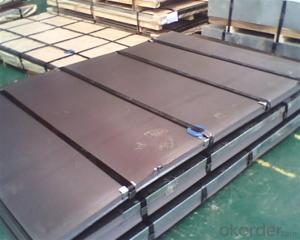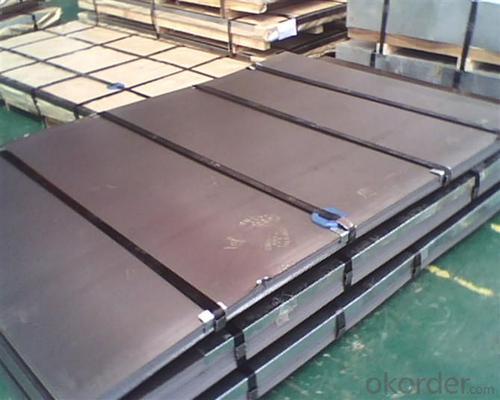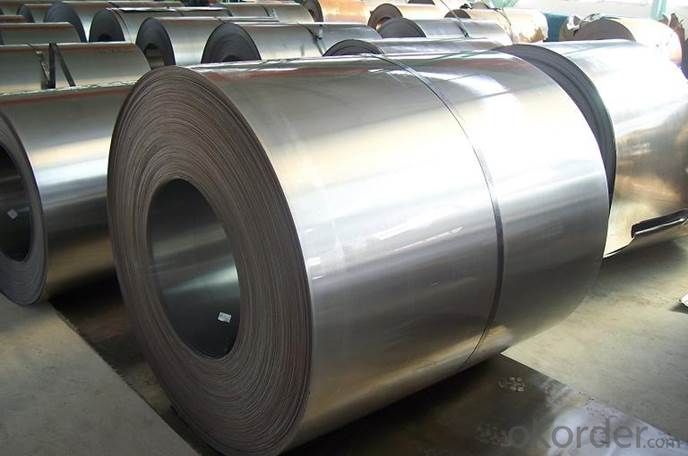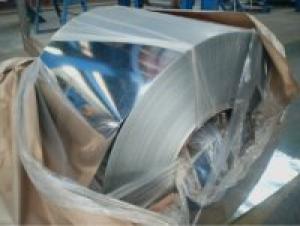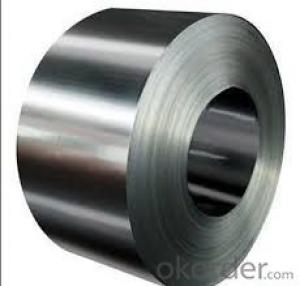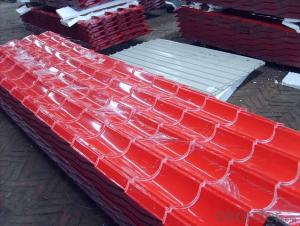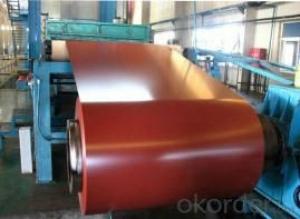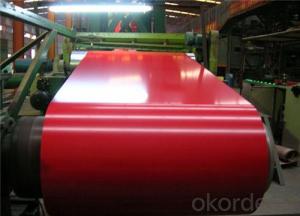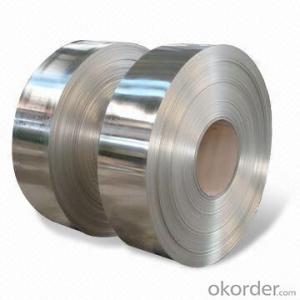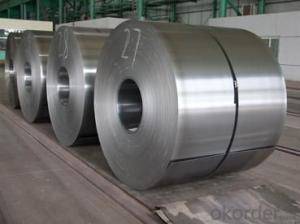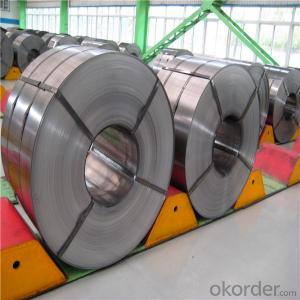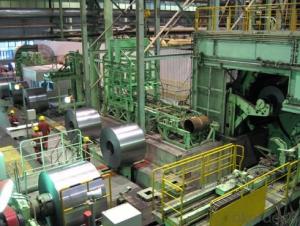Prime Cold Rolled Steel Coils, SPCC, DC01
- Loading Port:
- China main port
- Payment Terms:
- TT OR LC
- Min Order Qty:
- 25 m.t.
- Supply Capability:
- 100000 m.t./month
OKorder Service Pledge
OKorder Financial Service
You Might Also Like
Product Name | Cold Rolled Sheet Coil |
Material | SPCC/SPCD/SPCE/DC01/ST12/ ST14/SPCD/DC03/DC04 ect. |
Grade Standard | JIS G3302, EN10142, ASTM653, ASTM95 |
Thickness | 0.15-3.5mm |
Width | 600mm-1500mm |
Coil ID | 508-610mm |
Coil OD | max 1500mm |
Weight | 3-10 Tons |
Tolerance | Thickness tolerance:+/-0.02mm; Width tolerance:+/-5mm |
Surface | No-skin passed or Skin passed, Tensile leveled |
Surface Treatment | Chromate/Unchromate passivation, fingerprint resistant treatment, oiled/unoiled |
Annual Output | 350,000MT |
Application | Construction, hardware, home applicances, interior decoration |
Classification | Designation | Characteristics | Main applications |
Commercial quality | SPCC SPCCT | Commercial quality suitable for bending fabrication and simple forming; this is the type in greatest demand. | Refrigerators, cabinets, power distribution baords and drums. |
Drawing quality | SPCD | Drawing quality second only to that of SPCEN. Excellent uniformity. | Automobile floor and roof panels. |
Deep-drawing quality | SPCE SPCF | Deep-drawing quality.With metallurgically controlled grain size, it retains its beautiful finish even after being deep-drawn. | Automobile fenders and quarter panels |
Extra deep-drawing quality | SPCG | Extra-low-carbon steel sheets with highest workability | Automobile internal panels and deep-drawn parts |
- Q: I have been searching on pots and pans, how can I find out if it's really stainless steel, someone told me if a magnet sticks to it it's real stainless steel is this true?
- Some types of stainless are magnetic and some are not. being magnetic isn't a reliable way to tell the difference. In fact, only the cheapest pots would be made out of grades of stainless that are magnetic. Stainless pots/pans are generally made of non-magnetic types, but then again, aluminum isn't magnetic either. Aluminum and stainless are superficially very similar.
- Q: How are steel coils processed for painting or coating?
- Steel coils are processed for painting or coating through a series of steps. First, the coils are cleaned and treated to remove any impurities, such as oil, dirt, or rust, using chemical treatments or mechanical methods like abrasive blasting. Then, a primer or base coat is applied to enhance adhesion and provide corrosion resistance. After drying, the topcoat or finishing coat is applied using various techniques like coil coating, electrostatic spraying, or powder coating. Finally, the coated steel coils undergo curing or baking at high temperatures to ensure proper adhesion and durability of the paint or coating.
- Q: What are the environmental benefits of using steel coils?
- There are several environmental benefits of using steel coils. Firstly, steel is a highly recyclable material, meaning that it can be reused multiple times without losing its properties. This reduces the demand for raw materials and minimizes waste. Additionally, steel coils have a long lifespan, making them durable and resistant to wear and tear. This reduces the need for frequent replacements, saving resources and reducing waste. Furthermore, steel is a highly energy-efficient material, both in its production and during its use. It requires less energy to manufacture steel coils compared to other materials, and its high strength-to-weight ratio allows for lighter structures, reducing energy consumption in transportation. Overall, the use of steel coils contributes to a more sustainable and eco-friendly approach in various industries.
- Q: How much money do you think I could get per lb if I wanted to trade in scrap steel material?
- Scrap steel is usually traded per ton. Average steel prices fluctuate on a daily basis. General prices for scrap steel are around $100 - $200 per ton. For daily scrap steel prices check the source below
- Q: What are the dimensions of steel coils used in the power generation industry?
- The dimensions of steel coils used in the power generation industry can vary depending on the specific application and requirements. However, in general, steel coils for power generation are typically available in various sizes and thicknesses. The width of steel coils used in power generation can range from a few inches to several feet, depending on the specific equipment or machinery they are intended for. These coils are often designed to fit specific manufacturing processes or components within power generation systems. The thickness of steel coils used in the power generation industry can also vary significantly. Thicker coils are commonly utilized for heavy-duty applications that require increased strength and durability, while thinner coils may be suitable for less demanding tasks or where weight reduction is a priority. Additionally, the weight of steel coils used in power generation can vary depending on their dimensions and the specific steel material being used. The weight is an essential consideration during transportation, installation, and handling of the coils. It is important to note that the dimensions of steel coils used in the power generation industry can be customized to meet specific project requirements. Manufacturers typically work closely with power generation companies to understand their needs and provide tailored solutions that meet their dimensional specifications.
- Q: How are steel coils made?
- Steel coils are made through a process called hot rolling, where steel slabs are heated and passed through a series of rollers to reduce their thickness and shape them into long, coiled strips. This process helps enhance the steel's strength and flexibility, making it suitable for various industrial applications.
- Q: I have a need to connect various stainless steel tubes and fitting together and was wondering how to do it. I know a TIG welder is an option but have heard rumors that there is a way to solder it in much the same way you affix copper pipe. Perhaps with higher heat and different flux. I need step by step and maybe suppliers of the materials. Thanks in advance and please I do not need the call a plumber answers as I've gotten in the past
- Compression Ferrel connections are the best. for small diameter pipe and tubing. A local hardware shop can supply you with the necessary parts and pieces and can also give you a step by step procedure/self help brochure. This will also allow you to install any valve or t or blank in the piping system. The only tools required will be wrenchs and a tube/piping cutter for this type of installation. Brazing is accomplished by heating the base metal and then the rod. There are different types of brazing rod such as brass, bronze etc.. you will also need a can of flux to coat the rod or you can buy the rod pre-coated. If the seam is flat metal you can use the heat from the brazing tip to make the filler rod follow the direction you want. This also includes vertical such as on an auto body. I would suggest practicing this in a safe area. Always utilize a fire extinguisher, brazing goggles, welding gloves and wear a long sleeve shirt for your protection.
- Q: Why cold rolled stainless steel sheet is lower than cold rolled stainless steel coil?
- Hello! The reason is: 1. cold rolled flat plate is Kaiping;2. cold-rolled plates are negative tolerances.
- Q: What are the weight ranges for steel coils?
- The weight ranges for steel coils can vary depending on the specific type and size, but they typically range from a few hundred kilograms to several metric tons.
- Q: ...particularly for jewelry?
- Stainless steel is steel with lots of carbon in it. The amount of carbon gives it a so called grade. Marine grade, surgical grade etc.
Send your message to us
Prime Cold Rolled Steel Coils, SPCC, DC01
- Loading Port:
- China main port
- Payment Terms:
- TT OR LC
- Min Order Qty:
- 25 m.t.
- Supply Capability:
- 100000 m.t./month
OKorder Service Pledge
OKorder Financial Service
Similar products
Hot products
Hot Searches
Related keywords
